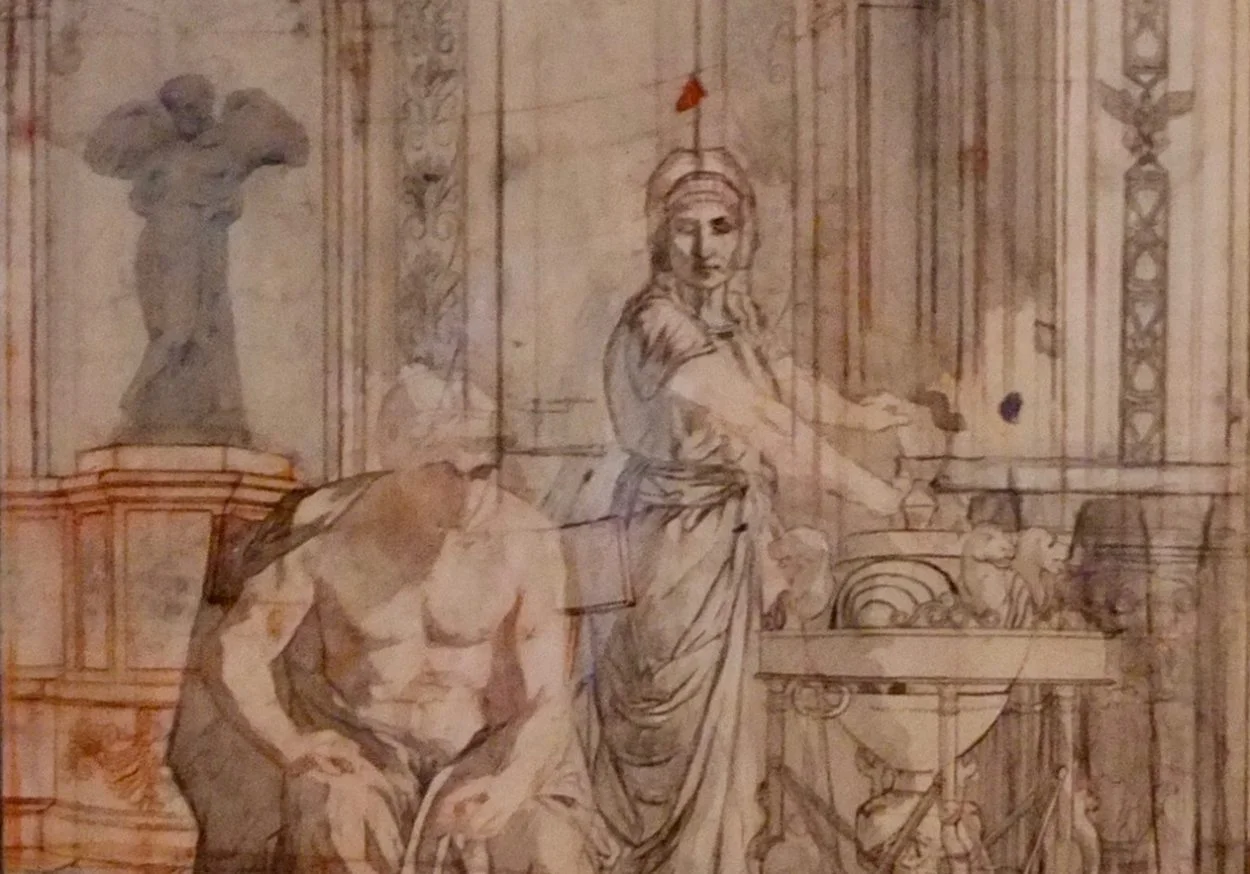Locusta was a notorious poisoner during the 1st-century AD, who’s fame led to her being in the service of the Roman ruling class to assassinate opponents during the final two reigns of the Julio-Claudian dynasty.
Most of what we know about Locusta comes from the Roman historians Tacitus, Suetonius, Cassius Dio, and the poet Decimus Junius Juvenalis.
Locusta was said to be of Gallic origin and was practising her craft in Rome around AD 54. She earned a living as a professional poisoner to rid wives of unwanted husbands, until she was arrested and condemned.
Her notoriety brought Locusta to the attentions of the empress Agrippina the Younger, who according to Tacitus had sought the death of her husband, emperor Claudius. In Tacitus’s annals he states:
“Under this great burden of anxiety, he [Claudius] had an attack of illness, and went to Sinuessa to recruit his strength with its balmy climate and salubrious waters. Thereupon, Agrippina, who had long decided on the crime and eagerly grasped at the opportunity thus offered, and did not lack instruments, deliberated on the nature of the poison to be used. The deed would be betrayed by one that was sudden and instantaneous, while if she chose a slow and lingering poison, there was a fear that Claudius, when near his end, might, on detecting the treachery, return to his love for his son.
She decided on some rare compound which might derange his mind and delay death. A person skilled in such matters was selected, Locusta by name, who had lately been condemned for poisoning, and had long been retained as one of the tools of despotism. By this woman’s art the poison was prepared, and it was to be administered by a eunuch, Halotus, who was accustomed to bring in and taste the dishes.”
With Claudius’ death, his son Britannicus had support from Claudius’s loyal and influential freedman to succeed him, but Agrippina had long been plotting the succession for her son Nero (that Claudius had adopted). According to Suetonius, Nero moved against Britannicus and employed Locusta’s services.
Suetonius accounts: “He employed for this purpose a woman named Locusta who had been a witness against some persons guilty of like practices. But the poison she gave him, working more slowly than he expected, and only causing a purge, he sent for the woman, and beat her with his own hand, charging her with administering an antidote instead of poison; and upon her alleging in excuse, that she had given Britannicus but a gentle mixture in order to prevent suspicion.
He commanded the poison to be brought into the eating-room and given to Britannicus, while he was at supper with him. The prince had no sooner tasted it than he sunk on the floor, Nero meanwhile pretending to the guests, that it was only a fit of the falling sickness, to which, he said, he was subject. He buried him the following day, in a mean and hurried way, during violent storms of rain. He gave Locusta a pardon, and rewarded her with a great estate in land, placing some disciples with her, to be instructed in her trade.”
In AD 68, the senator Gaius Julius Vindex rebelled against Nero. Vindex’s revolt failed in its immediate aim; however, Nero fled Rome when its discontented civil and military authorities eventually chose Servius Galba as the new emperor.
According to Suetonius: “On the arrival of the news, that the rest of the armies had declared against him, he tore to pieces the letters which were delivered to him at dinner, overthrew the table, and dashed with violence against the ground two favourite cups, which he called Homer’s, because some of that poet’s verses were cut upon them.
Then taking from Locusta a dose of poison, which he put up in a golden box, he went into the Servilian gardens, and thence dispatching a trusty freedman to Ostia, with orders to make ready a fleet.”
After learning that he was tried in absentia and condemned to death as a public enemy, Nero committed suicide, although according to Sulpicius Severus, he may have persuaded one of his remaining followers such as his private secretary, Epaphroditos, to perform the task.
After Nero’s death, Galba condemned Locusta along with Nero’s supporters. Cassio Dio states: “Helius, Narcissus, Patrobius, Locusta, the sorceress, and others of the scum that had come to the surface in Nero’s day, he ordered them to be led in chains throughout the whole city and then to be executed.”
Header Image Credit : Gabriel Martin – Sevastopol76 – CC BY-SA 4.0





